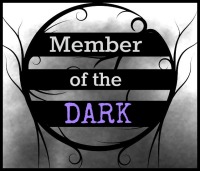We’ve all been there. Stalking an enemy until we find the perfect chance to strike or discover their hideout. Then the author falls asleep or gets bored and throws the entire scene into chaos.
Having one character follow another can be tedious, especially if it lasts for a chapter. I’ve seen it done different ways too. Some authors only have villains do tracking, so it’s in the background. Others have the trackers so far away that they can talk and the physical act is secondary. Then there’s avoiding such scenes entirely. I like having some tracking scenes since Luke is a forest tracker. Pointless to give him the skills and never have him use them. I tend to fall into that second category, but there are ways to make it interesting.
- Have the prey throw in some tricks like crossing water and backtracking. This makes them appear more cunning and the tracker more talented. It requires that the hunted knows they’re being followed, which makes sense. If you knew you were being tracked then you probably wouldn’t run in a straight line.
- Remember the senses. This sounds silly and obvious, but we tend to go with visual over others. Humans don’t have the best sense of smell and hearing can be iffy, but you can still use them. Consider that a tracker has trained these senses to be keener and more focused instead of letting them run in the mental background. Even with this, touch is incredibly important. A tracker can feel print depth, warmth from an abandoned fire, and changes in the wind to use while on the hunt.
- If you go with a scene where the heroes are far enough back that they can speak then you can have the tracker explain what they’re doing. Others in the group probably don’t know what’s going on and are curious. Some could ask or the tracker can simply explain the signs to make sure people are ready. This also reveals more of what is ahead and prepares the reader. Perhaps the prey has deeper prints for some reason or they have begun walking with a different stride. Did the heroes lose the trail or is there something waiting up ahead?
- Now, what if you have a solitary tracker? You can do two things here. Either they speak to themselves when far enough away or you use internal thinking. Describe their movements, responses, and reactions both in the physical and mental realms. For example, Luke is on the trail of orc bandits and he’s having trouble sifting through all of the footprints. Some are the thieves while others are from another group that could go off in another direction. He has to think and work to distinguish the paths, which can be shown through internal dialogue or exposition.
- Always fun to have something go horribly wrong. Tracking is such a delicate thing in fiction that it wouldn’t be surprising for the roles to reverse. More than once too as the predator and prey keep trying to one up each other. You could probably draw this out for a chapter too.






Good points. The best tracking scenes I’ve ever read were, surpisingly enough, in First Blood (yes, the excellent book on which Rambo was based). A must-read novella for anyone working with tracking scenes, as far as I’m concerned.
LikeLike
Didn’t realize there was a book about Rambo before the movie. Thought it was the other way around. Need to look that up. (That list is getting really long.)
LikeLiked by 1 person
You really should – it’s well worth it!
LikeLike
Reblogged this on Chris The Story Reading Ape's Blog.
LikeLike
Thanks for the reblog. 😀
LikeLiked by 1 person
Welcome Charles 👍😃
LikeLike
Great post, and these scenes come up all the time. My trick is to have actually done some tracking. Get out and pick up some boot prints, or even hoof prints, see what you can learn by following the trail.
LikeLiked by 1 person
Closest I’ve done to that is searching for animals at the zoo. Even in the enclosures, they aren’t easy to find. Tried tracking rabbits when I was younger and that failed.
LikeLiked by 1 person
Not too bad if you have snow, but otherwise there isn’t enough weight to a rabbit to make a decent track.
LikeLike
This was summer in an area with a lot of bushes. I failed repeatedly.
LikeLiked by 1 person
I really like it when the tracker is found out and falls into some kind of trap (Not Luke but let’s say someone tracking him.)
LikeLike
It’s definitely a fun twist, but I do worry that it gets overused. At some point, you start wondering if tracking is a worthless skill or the one in question is terrible at their job.
LikeLiked by 1 person
There is always a buffoon doing following rather than tracking.
LikeLike
These are great tips. I wrote a book with three characters, two of which tracked the first character. It really was difficult to keep the scenes interesting. So I appreciated the reminder in number 2. I have a tendency to focus on the visual.
LikeLike
Glad to help. Were the trackers a team or rivals?
LikeLike
Pingback: Writing Tracking Scenes: Happens More Often than One Expects, by Charles Yallowitz – Allison D. Reid
Reblogged this on Don Massenzio's Blog and commented:
Here are some great tips for writing tracking scenes from Charle’s Yallowitz
LikeLike
Thanks for the reblog.
LikeLiked by 1 person
You’re welcome
LikeLike
I think there’s something very interesting in a conflict that’s rooted in one character tracking another. They could lay traps, confuse, hide, and even try to kill each other, all without ever actually meeting. There would be this rich relationship, without having the two characters ever actually meet. The strategies that someone uses to try and evade the tracker can be their own form of characterization. Certainly a provocative thought.
LikeLike
There’s also a sense of tension as the tracker gets closer. One of my favorite series is The Ranger’s Apprentice, which has great tracking scenes. They’re so well done that they help me get into the story. More so than the action at times.
LikeLiked by 1 person
Reblogged this on TheKingsKidChronicles and commented:
More great information from thestoryreadingape on writing tracking scenes. Reblogged from https://legendsofwindemere.com
LikeLike
Thanks for the reblog.
LikeLike